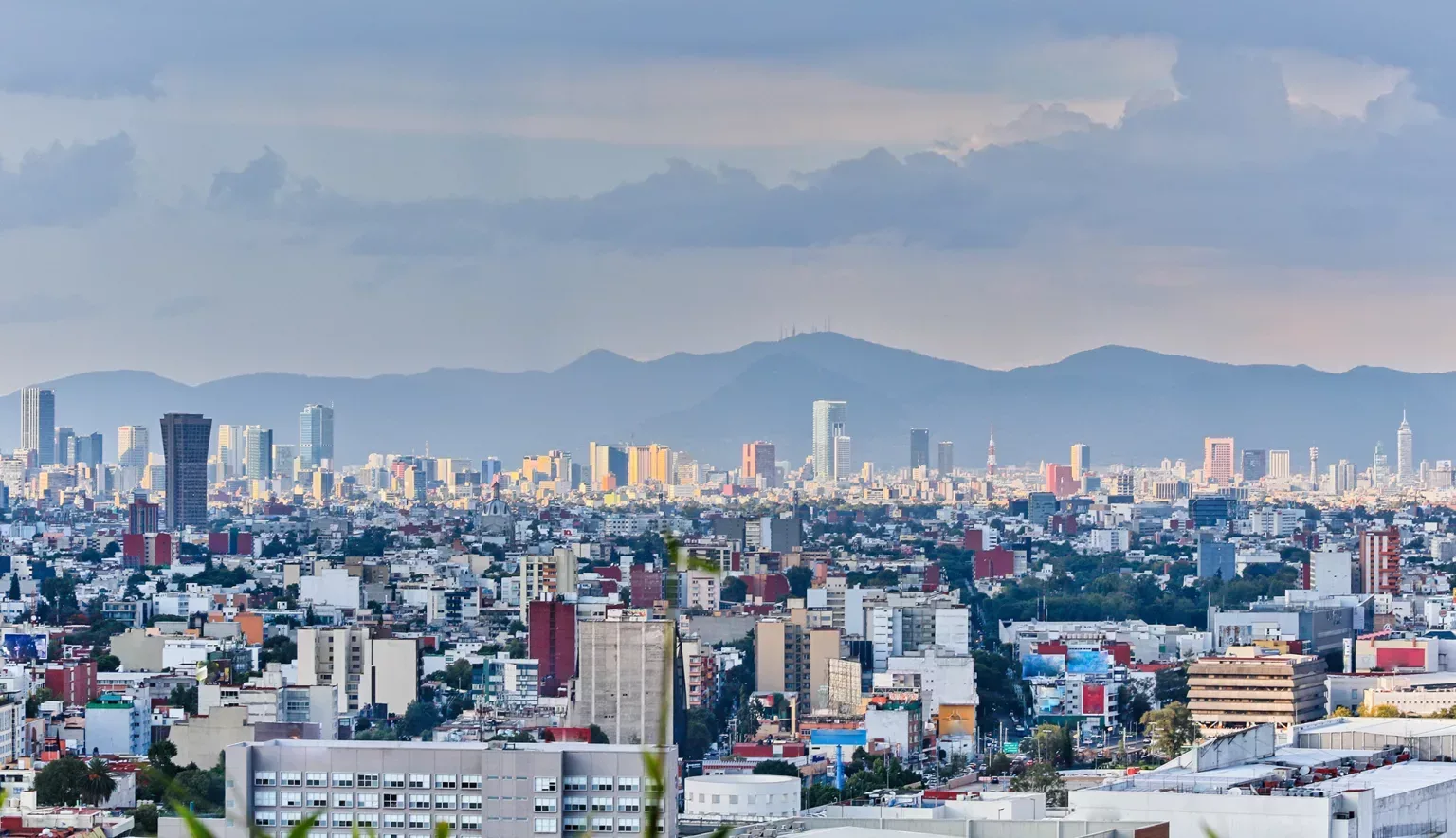The high-octane capital pulsating with colour and vibrancy, peel back the covers on the megalopolis of Mexico City – the Western Hemisphere’s oldest urban centre.
MEXICO CITY
Over seven centuries ago, what we know today as Mexico City (CDMX), rose from the swamps, as the ancient Aztecs founded their capital and named it Tenochtitlán. An island settlement laid on the bed of Lake Texcoco, Tenochtitlán flourished before the age of the Spanish conquistadors, lured by the city’s riches that made for ripe conquest.
Today, the urban sprawl of CDMX stands as Mexico’s capital in every possible way, as a true beacon of the arts, politics, and culture. Indeed, CDMX numbers amongst the world’s mega-cities, home to almost 25 million people.
Relics of the pre-Hispanic era still stand, witnessed by the formidable pyramids of Teotihuacán, City of the Gods, on the outskirts of the city beyond the CDMX, to the remains of the Mexica temple buried beneath the colonial splendour of the Templo Mayor and in the historic plaza of the Zócalo – the true soul of the city. Elsewhere, the Plaza Garibaldi resounds with the sound of mariachi, while La Merced boasts the city’s largest market. Mexico City’s history is intrinsically bound to legendary figures, from the murals of Diego Rivera to be discovered in the museum of his name in Alameda, to the iconic Casa Azul of Frida Kahlo in colourful Coyoacán.
A cosmopolitan destination bursting with creativity, stroll through leafy neighbourhoods and upmarket districts, taking in bohemian cafes and lazy ancient canals, reminiscent of the city’s island past. Home to a cutting-edge design and art scene of worldwide renown, CDMX is a true feast for any cultural connoisseur, with the city hosting a true renaissance in its galleries and public spaces.
Turning to the culinary scene, you will be torn between traditional cantinas, classic taco spots, and mezcal bars that beg exploration on heady city evenings against a backdrop of robust palm trees. The tangible marriage of Aztec and Spanish influence abounds, from architecture to gastronomy. Yet above all, it is the famous hospitality of the Mexican people that prevails.
TOURISM INSIGHTS: GOBIERNO DE LA CIUDAD DE MÉXICO
Since 1900, the Gobierno de la Ciudad de México (GCM) has been the government agency dedicated to the promotion of Mexico City as an attractive tourist destination. We examine COVID-19 recovery and reasons to make Mexico City your destination of choice with the association’s Secretary of Tourism, Carlos Mackinlay, as the country celebrates 700 years of CDMX.
Q&A WITH CARLOS MACKINLAY, SECRETARY OF TOURISM, GCM
What are your organisation’s current goals?
Carlos Mackinlay, Secretary of Tourism (CM): Our main objective is to return to the same continuous growth that we had prior to the COVID-19 pandemic. Currently, Mexico City is in reactivation mode, especially after successfully facing the third wave of the virus. Today, we need to focus on increasing the arrival of national and international tourists. We need to generate a greater economic spill over and therefore improve the economic situation of the tourism industry in general.
Today, beginning in September, the occupancy rate in hotels is reaching from 37 percent to 40 percent, far from our 70 percent rate that we were used to. However, our main priority is to gain the confidence of our tourists in order for them to return, and to achieve this we need not only to promote the city from a tourism point of view, but also on the sanitary measures implemented. The city has the ‘Safe Travels’ seal that has been granted to more than 1,000 companies. Also, we have the ‘Tourist Security Stamp’ that has already been received by more than 20,000 tourism establishments, and above all the successful vaccination process, which in perspective, by the end of October the entire population above 18-year-olds in the city will be fully vaccinated.
How do you market Mexico City as both a business and leisure travel destination?
CM: We have launched a campaign called ‘Mexico City – The City That Has It All’ (La Ciudad que lo tiene todo). As a secure city, that is mainly focused on the national cultural segment, for those living close to the city and can travel by car. However, this is also targeted towards international tourism at the Mexico City International Airport. Furthermore, all the airports in the country have never closed during the pandemic. This has made Mexico the third largest recipient country according to the Organizacion Mundial del Turismo (OMT) figures, which is a classification that will be temporary, but that shows that the country has always been open to tourism.
‘The City That Has It All’ campaign is being communicated through the national and foreign airlines, with billboards and adverts throughout the country, including Mexico City and its surroundings, and spread further still through the virtuous relationship with all the tourism associations that are replicating it within their social media campaigns. The campaign has already given good results in this first month of launch.
It is important to consider that the offer in the campaign is mainly focused on the cultural or leisure segments, since it includes second semester activities such as the Day of the Dead festivities (Día de los Muertos), the Formula One (F1), the historic commemorations that have been accumulated throughout this year and the end of year activities. Great cultural events include the Frida Kahlo experience, Van Gogh Alive, or Da Vinci. There are concerts already scheduled, for example the Corona Capital, amongst others.
Regarding the meetings and conventions segment, this was greatly affected by the health crisis, however congress and conventions, fairs and exhibitions are already allowed again, so this will surely start growing by the end of the year or first quarter of 2022. The promotion targeted for this segment is being articulated together with the specialised agencies in the field.
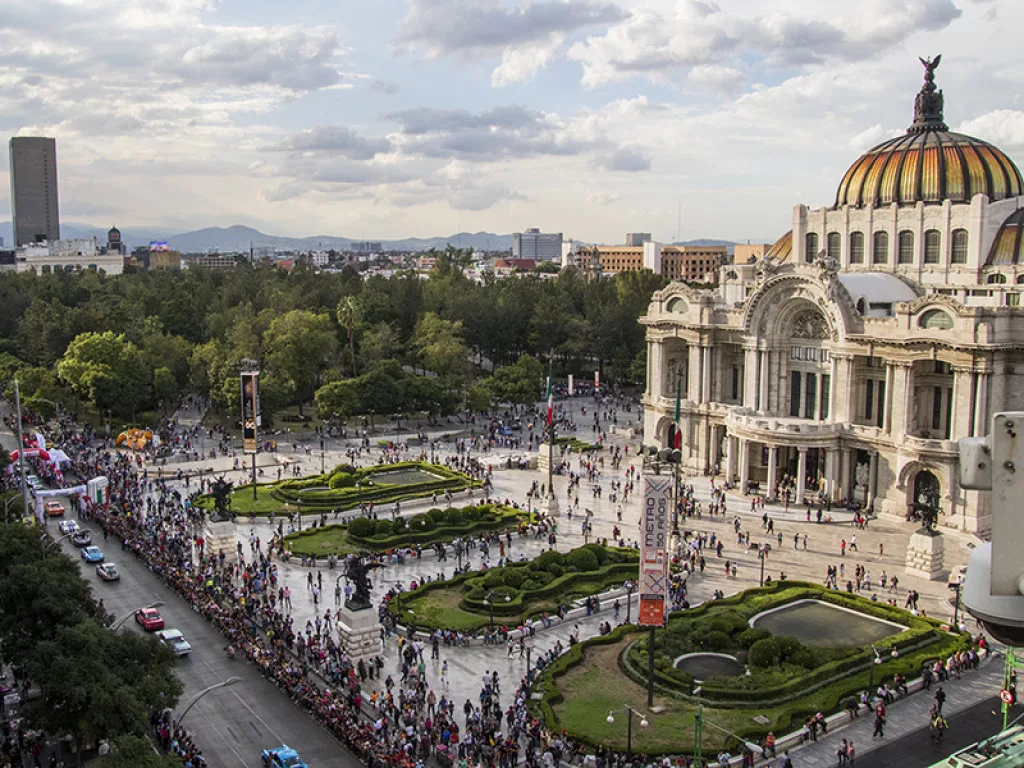
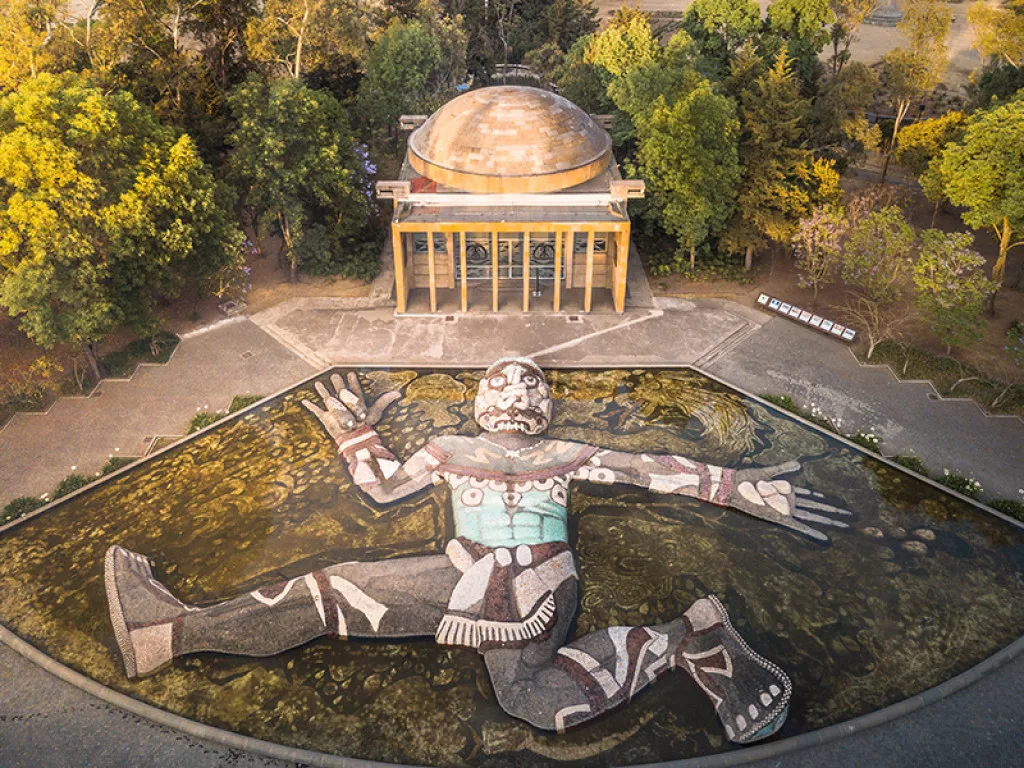
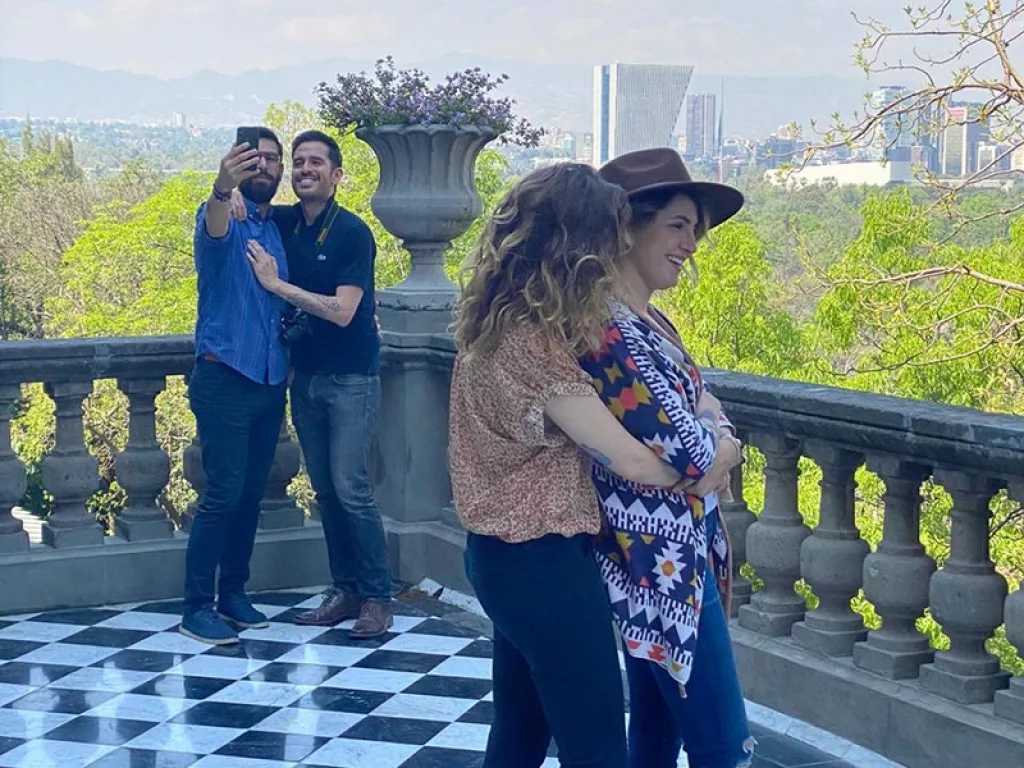
Are there any interesting upcoming events or occasions in the city that you would like to highlight? For instance, I understand that this year you are celebrating 700 years of Mexico City?
CM: As I mentioned, the greatest events that are upcoming include the Day of the Dead festivities, and the F1, but 2021 is also the year that we celebrated 700 years since the city’s foundation. It is officially 500 years since the Mexico Tenochtitlan falling and the beginning of indigenous resistance. Now in September we will be celebrating 200 years of Mexican Independence.
So, we worked on a tourism guide named Mexico Tenochtitlán, and also there have been a great number of forums, symposiums, debates, discussions and publications about the relevance of this year’s historic commemorations. This has been exploited and promoted for the cultural segment, fortunately now the archaeological sites as well as museums are already open to be visited.
Why, in your opinion, should someone visit Mexico City?
CM: There are many good reasons why someone should visit Mexico City. First it is one of the most interesting and vibrant metropolises in the world. From pre-Hispanic spaces, to over 1,400 colonial buildings within the downtown area, and one of the brightest and modern architectural sights that can be seen in Santa Fe or by visiting the Luis Barragán house that was awarded the Pritzker architecture prize.
Other reasons are the spaces that can be discovered throughout the city – its four world heritage sites, 182 museums, and the permanent number of exhibitions. As a result of this, Mexico City has experienced a contemporary art boom whereby there is a week at the beginning of each year that features four to five contemporary art fairs.
However, the main reason why someone must visit Mexico City is because of the hospitality of its people and the service offered by its establishments. We are very interested in the city becoming known for these factors.
What are some of the country’s most unique landmarks?
CM: If I had to recommend visiting the city for a few days, I would recommend Chapultepec Park, the Museum of Anthropology, the Chapultepec Castle and taking a tourist bus – such as Turibus or Capital Bus – on their routes downtown to view the zócalo (main square), Templo Mayor, Plaza Santo Domingo, Francisco I Madero Street, Bellas Artes Palace and to explore some of the great colonial buildings in the area.
Staying on a Saturday, you can’t miss visiting San Angel, Coyoacán and Xochimilco area, in the south part of the city. Also walking through the most trendy and bohemian neighbourhoods like Condesa, Roma or Santa Maria La Ribera. Furthermore, many don’t know that over 60 percent of the city’s territory is rural, so there is a great opportunity here for rural tourism, for instance if you like to explore volcanoes or caving. You can also practice kayaking in the natural channels in the Xochimilco area. The city also offers familiar alternatives, by visiting the zoos, amusement parks and specialised museums for kids. There are a lot of places to go. To really enjoy the city, I would recommend seven days, six nights stay for all our visitors.
What trends are currently transforming tourism across Mexico, how are you utilising them?
CM: One of the trends that we have been having in the city has to be with the mobility of people, having the flexibility of working from any place on the planet. A lot of foreign visitors come to the city and make their home office here, integrating themselves to their neighbourhoods, walking their dogs, eating the traditional food and taking advantage of the wealth of history that it offers. These people usually use the interactive platforms such as Airbnb and HomeAway, among others and they stay at the city from 14 days to months.
Another trend concerns undertaking more individualised tourism, where you can walk through great outdoor spaces. Mexico City has modified, renovated and created parks like Xochimilco ecological park, Aragón Forest, and the fourth section of the Chapultepec Park, which was a reserve area and is now becoming a touristic attraction. The city has combined these new trends with the conditions that the coronavirus has imposed on us, being designed more for small groups rather than larger tours.
What are the greatest challenges experienced by the tourism industry in your region?
CM: One of the most important challenges that we face is to regain confidence and trust in the city, since, as you know major cities around the world were the most impacted by the sanitary crisis. The second great challenge is to promote the city according to the new needs of our national and international target. Without any doubt, we must position Mexico City as a great place to do cultural, leisure, and business travel. I am certain that we will fulfil these challenges very soon.
Are you optimistic about the future of the tourism industry in Mexico City, particularly with regards to the COVID-19 pandemic?
CM: Of course, we feel optimistic about tourism in Mexico City. We have discovered many very interesting things throughout this pandemic – first of all the great willingness of tourism service providers to work with strict protocols, applying all safety and hygiene measures, and to support the promotion of the city as they have never done before.
Another important factor is the tourism investments in this city. Currently there are more than 20 hotel constructions projects, all of them are luxury hotels that are generating employment throughout their construction and will create a very important and stable employment when they are finished. These investments represent more than 4,300 hotel rooms, which is practically 10 percent of the hotel capacity offered today.
We will recover the tourism that we used to have, since it is an activity that has not stopped growing, obviously except in the pandemic, but it is still an activity that the world will gradually recover. We already have that certainty that in the second half of the year our situation will improve significantly, and that in 2022 we will in the process of reaching the 2019 data.
It is very important to emphasise that this government is doing many things and doing them very well. The recovery of public spaces, social policies, security, lighting, and the vaccination process, all these elements make this city remain the friendliest of the cities in the world, as the city that has it all.
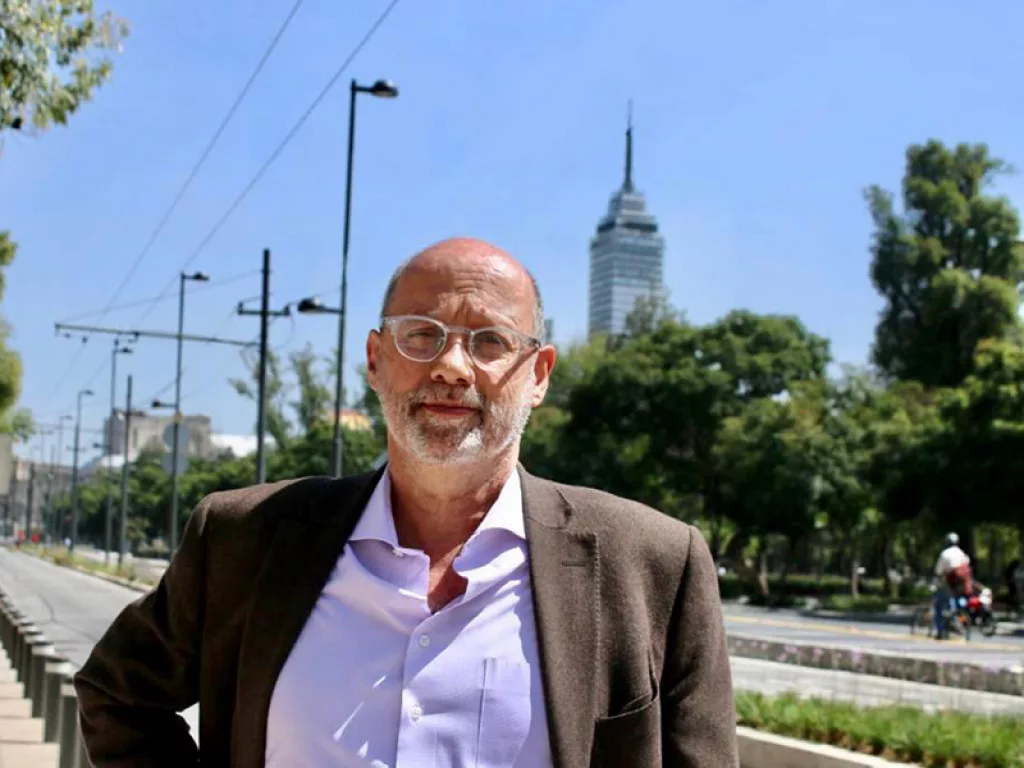
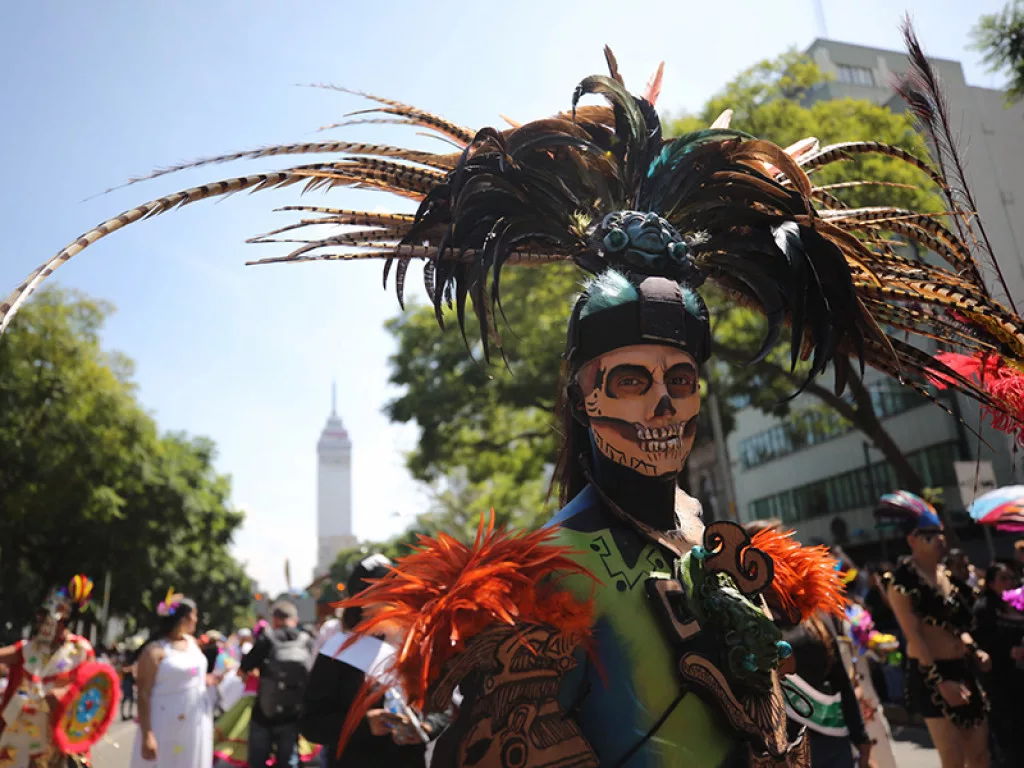
OUTLOOK RECOMMENDS
Eat:
FOR CONTEMPORARY MEXICAN GASTRONOMY
Tipped by the Wall Street Journal as the best restaurant in Mexico City and ranked amongst the top 50 in the world, Pujol boasts Mexican cuisine and an ever-changing menu with an on-site organic garden.
FOR LATE NIGHT TACO CRAVINGS
Long after restaurant closing hours, many taco joints across CDMX remain open. Rather than sniffing them out solo, be led around some of the finest spots in the world’s taco capital. Book experiences through Club Tengo Hambre.
Do:
FOR EXPLORING THE CITY LIKE A LOCAL
Consistently ranked as a TripAdvisor favourite, Mexico a Pie Walking Tours & Travel Experiences offer a full range of either private or group excursions to uncover the city on foot. Head to their website to explore their selection of immersive travel experiences with expert local guides.
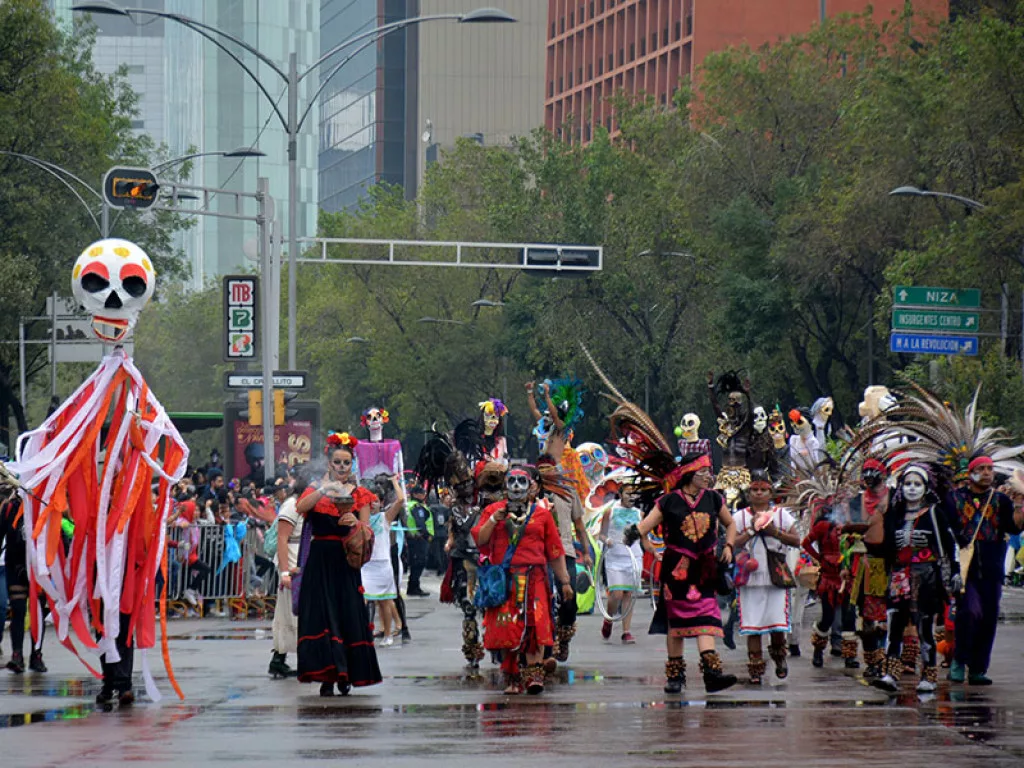
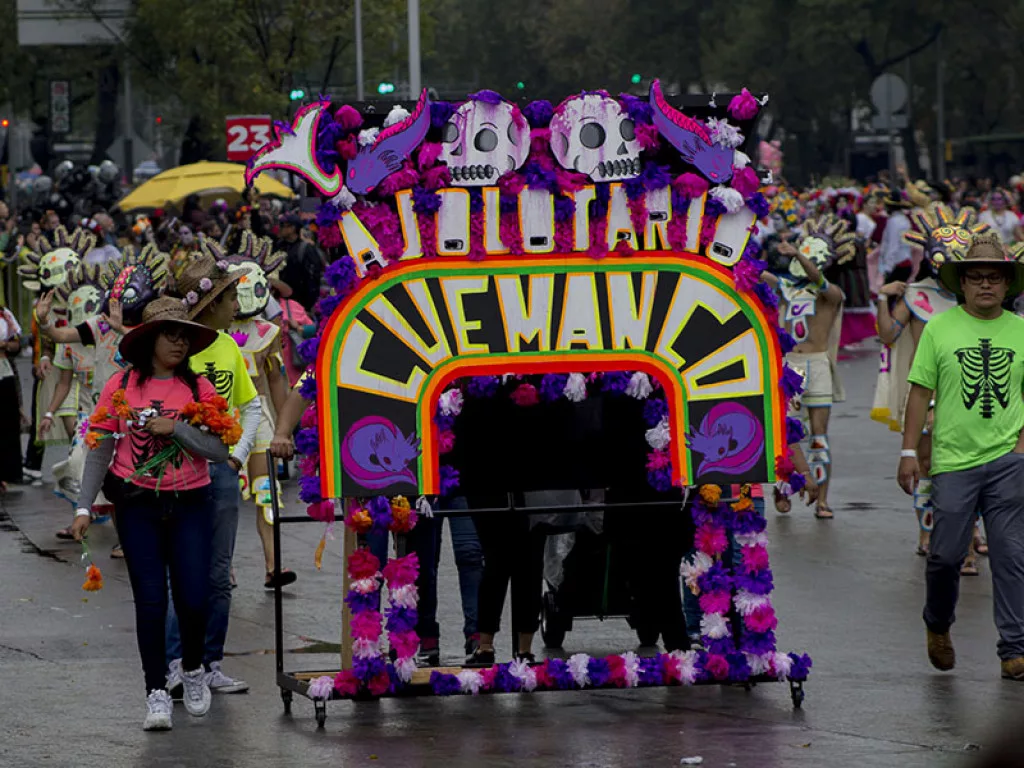
Sleep:
FOR TRADITIONAL SPLENDOUR WITH MODERN COMFORT
Stay in the beating heart of the Centro Histórico in characterful rooms at the Hotel Zócalo Central.
FOR CAPITAL CONVENIENCE
Boasting sophistication and warmth in a beautifully restored building – Histórico Central Hotel – the second hotel in the Central string, is another fantastic option.
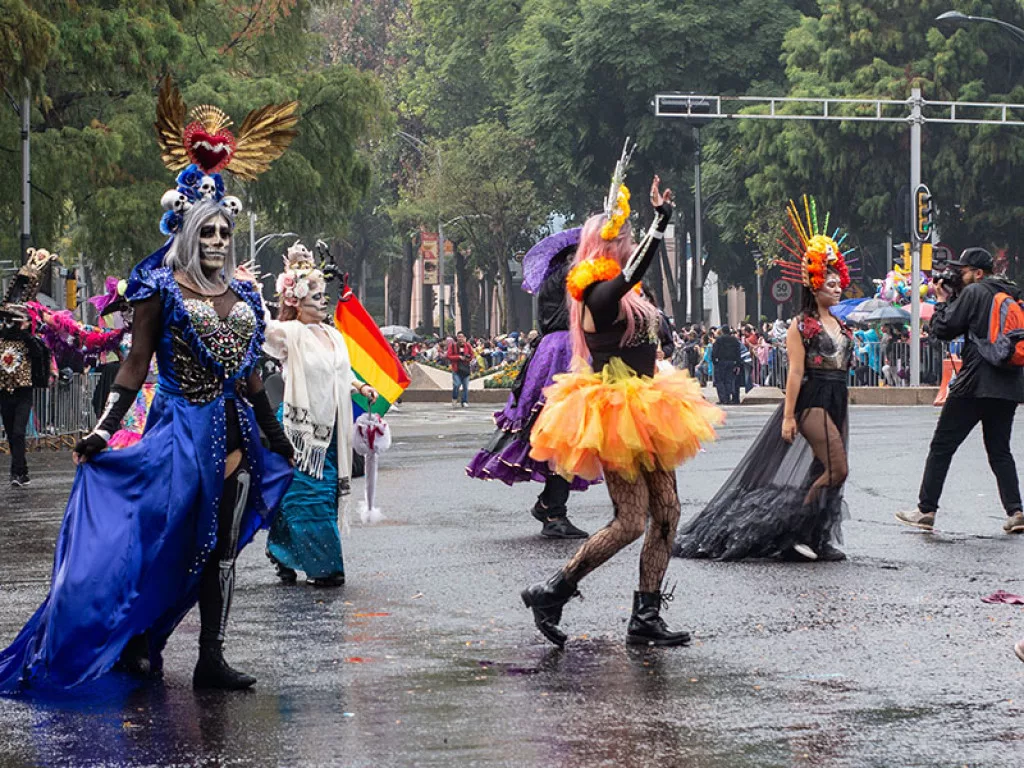
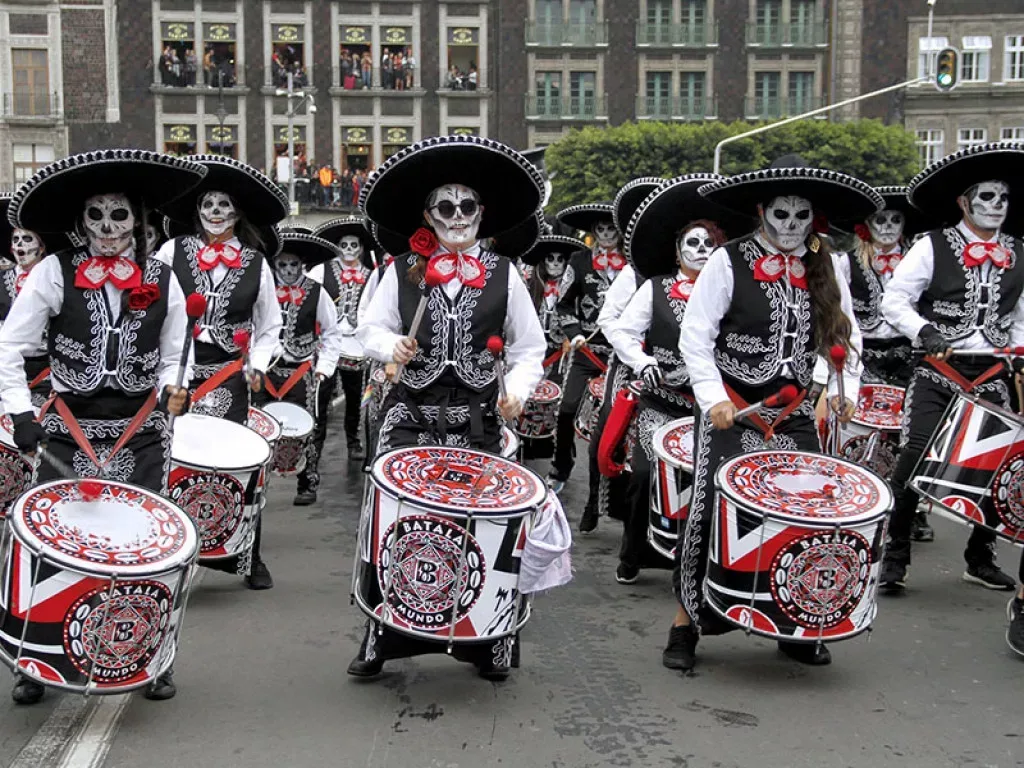
DÍA DE LOS MUERTOS IN FOCUS
Commonly mistaken as ‘Mexican Halloween’, the annual event of Día de Los Muertos, or Day of the Dead, is a pagan event rooted in pre-Hispanic tradition. The celebration is steeped in indigenous beliefs, a culmination of both Aztec, Maya and Toltec, so it is not surprising that the festival’s traditions are most fervently upheld in areas where pre-Hispanic heritage is prevalent.
Celebrated annually between the 31st October and 2nd November, the occasion marks the period when the souls of the dead are believed to return to the worldly realm. It is overridden by a tone of celebration, far from a time of mourning which is believed in many pre-Hispanic cultures to be a sign of disrespect, since death is conceived as merely another stage in life’s long journey.
A joyous event, families unite to celebrate the memories of lost loved ones, paying a visit to the family plot at the local cemetery. In homage, candles are lit, foods are prepared, and altars or ofrendas are constructed either in the family home or at the graveside by way of a welcoming portal, marking the gateway for souls to pass through.
Ritual traditions abound, including cleaning the home in preparation for this sacred time. Pan de muerto, or bread of the dead, is baked to nourish souls after their long journey from the afterlife. Come evening, locals gather in cemeteries to enjoy home prepared meals and sip their relative’s favourite drinks – most commonly hot chocolate or some warming tequila.
Sporadic and chaotic parades take to the streets, serenaded by a cacophony of mariachi trumpets, and the scent of cinnamon fills the air as traditional candied pumpkins are offered as street snacks. The figure of ‘La Catrina’ dominates, particularly on the ubiquitous sugar skulls, depicting the aristocratic and overtly European woman-cum-skeleton, as a reminder that death is the greatest leveller of all.
Celebrations begin on October 31st with the Night of the Witches, followed by the Day of the Innocents in honour of departed children. Parades in Mexico City commonly take place on the official day of celebration – November 2nd.
LANDMARK ATTRACTIONS
CASA AZUL
A striking cobalt landmark in the historic Coyoacán district, Casa Azul is the childhood home of Frida Kahlo. It was here that the legendary artist was born, and indeed died, before mastering her painterly craft whilst bedbound following a horrific bus accident. Wander through the rooms and gardens to discover the true nexus of Kahlo’s life and works.
PALACIO DE BELLAS ARTES
Testament to CDMX’s artistic heritage, the Palacio de Bellas Artes in Alameda is a monument in itself, as an awe-inspiring white marble palace. Inside, marvel at the art deco interiors and iconic murals in true celebration of Mexican culture. Encasing the creative soul of Mexico City, the building is also a renowned performance space.
TEOTIHUACÁN
Located some 50 kilometres outside of the city in the Valle de México, discover the largest pre-Hispanic site in Mexico at the Pyramids of Teotihuacán. The enigmatic ruins of the Pirámide de Sol and slightly smaller Pirámide de la Luna can be explored in a day-trip from the city and stand as the impressive archaeological remains of the ancient capital.
GETTING THERE & AROUND
It may be easy to feel dwarfed by such an enormous destination, reputed for some of the worst traffic jams in the world, which makes public transport a great way to explore CDMX. As one of the world’s cheapest subways, the Metro system is the quickest way to explore, with regular and relatively user-friendly schedules. That being said, crowds are to be expected, particularly during rush hour. Buses and the Metrobus are also viable options, and we also recommend taking advantage of complimentary bike hire that can be found in booths in certain areas across the city.
Regular and competitive international flights arrive into Mexico City International Airport (MEX), which is well-served by Mexico’s largest airline Aeroméxico. From here, there are a wealth of public transport options or taxis available to venture downtown.


